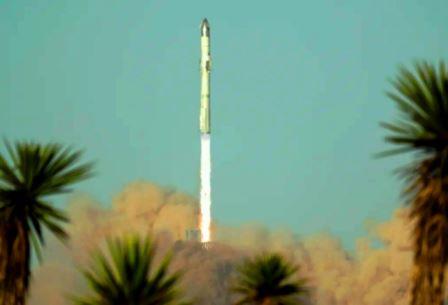FAA Grounds Florida Flights After SpaceX Starship Explosion Safety Concerns Rise
FAA Grounds Florida Flights After SpaceX Starship Explosion Safety Concerns Rise: The Federal Aviation Administration (FAA) temporarily suspended flights to several Florida airports Thursday night after SpaceX’s Starship rocket failed to test. The incident, which caused debris to fall from the spacecraft, disrupted commercial flights and marked the second accident for SpaceX this year.
Second SpaceX Starship accident in 2024: The event underscores growing concerns about the safety and reliability of SpaceX’s Starship program. The failure occurred during a flight test, causing debris to fall and prompting the FAA to implement emergency safety measures. The affected airports include Miami International Airport, a key hub for American Airlines, as well as airports serving Fort Lauderdale, West Palm Beach and Orlando, Florida.
In response, the FAA issued a statement Thursday evening saying SpaceX must now conduct a formal investigation into the damage to the Starship vehicle. The regulator stressed that the investigation is necessary to determine the cause of the incident and prevent it from happening again in the future.
FAA Grounds Florida Flights After SpaceX Starship Explosion Safety Concerns Rise
FAA Enforces Safety Protocols: According to the FAA, officials quickly activated a debris response area to ensure public safety. The agency briefly slowed air traffic in the surrounding area and in some cases prevented flights from taking off. Fortunately, normal flight operations resumed shortly after the threat of debris subsided.
SpaceX acknowledged the accident in a post on X (formerly Twitter), saying that during the vehicle’s ascent, it experienced what it described as an “unfavorable rapid disintegration.” The company lost contact with Starship mid-flight, but quickly began coordinating with safety officials to implement pre-planned contingency measures.
Failure Cause Analysis: Starship’s final test flight launched from SpaceX Spaceport near Brownsville, Texas, at 6:30 p.m. ET. During the flight, several engines appeared to unexpectedly shut down while the upper stage Starship vehicle was still in ascent. Shortly after, the company lost all communication with the spacecraft. However, SpaceX engineers were able to successfully use the launch tower arms to trap the rocket’s super heavy booster, preventing further damage or injury.
The company said it would conduct a thorough review of flight data to determine the root cause of the failure. This marks another significant setback for SpaceX’s ambitious Starship program, which has faced increasing scrutiny due to safety concerns and previous accidents.
SpaceX’s recurring problems with Starship flights: This isn’t the first time that Starship has caused test flight disruptions. On January 16, a previous test failed when the rocket broke up mid-flight. The incident caused dozens of commercial flights to be diverted as the FAA warned pilots about possible space debris in the affected area.
Commercial airlines, private jets and spaceflight operations compete for limited airspace, especially in Florida, and the incidents have raised concerns about the impact of space launches on the aviation industry. The FAA had already ordered SpaceX to conduct an investigation into the January 16 failure, but the agency allowed the company to continue with its final test before completing the previous investigation. Now, both incidents require further scrutiny.FAA Grounds Florida Flights After SpaceX Starship Explosion Safety Concerns Rise.
SpaceX’s ambitious Starship program: Starship represents a key part of SpaceX’s future ambitions. The rocket, when fully assembled with its Super Heavy booster, will measure an impressive 403 feet long and 30 feet in diameter, making it the tallest and most powerful rocket ever launched. SpaceX envisions Starship as a key player in deep space exploration, including missions to Mars and the Moon, as well as commercial spaceflight.
Despite these ambitions, repeated failures have raised concerns in the aerospace industry and among government regulators. SpaceX has yet to provide additional details about the latest test flight failure beyond its initial statements.
Adding to the controversy, SpaceX founder Elon Musk’s political connections have drawn attention to his influence over regulators, including the FAA. Musk, who served as a senior adviser to former President Donald Trump, has been tasked with recommending sweeping cuts to several government agencies. This has raised concerns among Democratic lawmakers, who are concerned about potential conflicts of interest, safety risks and the extent of Musk’s regulatory influence.
As the investigation into the recent SpaceX Starship failure unfolds, scrutiny of both the company’s technical reliability and its regulatory oversight is expected to intensify. The balance between innovation and public safety remains a critical issue, as tensions between commercial spaceflight operators and traditional aviation stakeholders continue to rise.
Despite the setbacks, SpaceX is committed to improving and advancing its Starship program. The company must address safety concerns, improve the reliability of its test flights and navigate increasing regulatory scrutiny. The FAA’s ongoing investigations will play a key role in determining the future of Starship and its impact on commercial airspace.
As SpaceX continues to push the boundaries of space exploration, the aerospace industry and the public will be watching closely to see if these high-profile failures lead to significant improvements or new setbacks.

